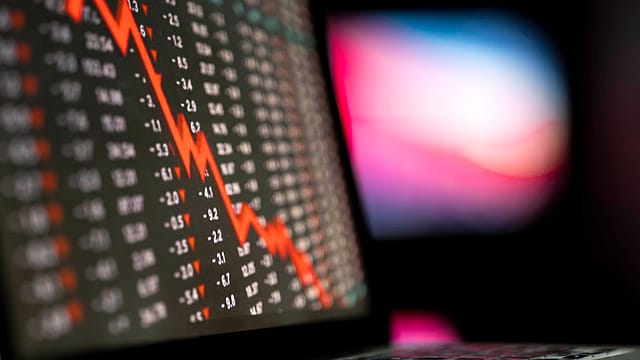Rate hikes to put pressure on stock market: Crisil
ADVERTISEMENT

Domestic financial markets are expected to face more pressure in coming months as the Reserve Bank of India (RBI) and other major global central banks accelerate the pace of tightening, according to Crisil.
“We expect the RBI to raise the repo rate by at least 75 bps this fiscal, on top of the 90 bps it has already done. This will bring repo rate to 5.65% by fiscal-end, 50 bps above the pre-pandemic level of 5.15% in February 2020,” the rating agency says, adding that the rate actions are expected to be frontloaded this year, given the accelerating inflation.
The U.S. Federal Reserve, which has already increased its key rate by 150 bps so far, is expected to be even more aggressive. According to the projections made by Fed participants in June, the median expectation of the federal funds rate is to reach 3.4% by the end of 2022, which will be the highest level since 2008.
Other major central banks, including the European Central Bank (ECB), are also expected to hike policy rates this year. This will tighten global financial conditions further, impacting capital flows into emerging markets, including India, Crisil says.
India is also becoming more vulnerable to external shocks as crude price has risen further to around $120 per barrel since May, the rating agency says. “Overall external vulnerability is worsening, though it is lower than in 2013 when taper tantrum had wreaked havoc. We expect CAD (current account deficit) to rise to 3% of GDP (gross domestic product) this fiscal, which would be the highest since fiscal 2013,” it adds.
January 2026
Netflix, which has been in India for a decade, has successfully struck a balance between high-class premium content and pricing that attracts a range of customers. Find out how the U.S. streaming giant evolved in India, plus an exclusive interview with CEO Ted Sarandos. Also read about the Best Investments for 2026, and how rising growth and easing inflation will come in handy for finance minister Nirmala Sitharaman as she prepares Budget 2026.
Domestic financial conditions tightened in May, driven by both domestic and external factors, shows Crisil’s Financial Conditions Index (FCI) — a summary indicator combining key parameters across equity, money, debt, and foreign exchange markets with policy and lending conditions.
Financial conditions in the month were the tightest in two years. The FCI turned negative, reaching the lowest level since June 2020. The index reading reflects the impact of the Reserve Bank of India’s (RBI) rate hike in May that tightened liquidity in the economy and of strong foreign capital outflows as a reaction to external developments.
In an off-cycle meeting in May, the RBI’s Monetary Policy Committee raised policy repo rates by 40 basis points (bps) to 4.40%. Consequently, the standing deposit facility (SDF) rose to 4.15%, and the marginal standing facility (MSF) to 4.65%. The committee also increased banks’ cash reserve ratio (CRR) by 50 bps to 4.50% in order to further reduce excess liquidity in the banking system.
The CRR hike, increased FPI outflows, and higher bank credit growth led to a sharp reduction in surplus liquidity in the system. The liquidity reduction was evident in the steep fall in average funds the RBI absorbs through liquidity adjustment facility (LAF) to ₹4.4 lakh crore in May — the lowest since April 2020 when the amount was ₹4.7 lakh crore — from ₹ 6.5 lakh crore the previous month.
The price of Brent crude oil surged 6.2% on-month to average at $112.4 per barrel in May, raising investor concerns about worsening outlook for India’s current account deficit (CAD), inflation and fiscal health.
Amid tightening global conditions, fears of weakening global growth, and rising risks on Indian macros, foreign portfolio investor (FPI) outflows swelled to $4.7 billion (net) in May from $3 billion in April. The outflow from equities was larger, resulting in a 6.4% month-on-month decline in the benchmark Sensex. The equity market also remained extremely volatile, with the National Stock Exchange’s (NSE’s) volatility index, India VIX, rising above its decadal average.
However, despite the rising cost of credit, bank lending rates remained lower than pre-Covid decadal averages. Given the availability of funds and gradual improvement in demand across sectors, bank credit saw a gradual uptick. In May, bank loans increased 12.1% on-year compared with 11.1% previous month. This is the highest growth rate seen since January 2020.
